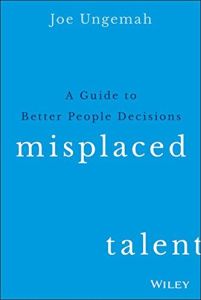Зарегистрируйтесь на getAbstract, чтобы получить доступ к этому краткому изложению.

Зарегистрируйтесь на getAbstract, чтобы получить доступ к этому краткому изложению.
Joe Ungemah
Misplaced Talent
A Guide to Better People Decisions
Wiley, 2015
Что внутри?
Build an integrated, structured talent management program to nurture engaged, productive employees.
Recommendation
Seasoned consultant Joe Ungemah provides a concise, practical guide to modern talent management. As he covers recruiting, “employer branding,” competencies, capabilities, engagement, learning, change management, succession planning, performance and metrics, an integrated, holistic model of people management emerges. And, he explains why workforce initiatives often fail. Some of Ungemah’s data sources seem dated, but his refreshing emphasis on building and maintaining healthy, balanced relationships between employers and employees – as opposed to a single-minded focus on results and revenue – is rare and useful. getAbstract recommends his insights to CEOs, HR professionals, entrepreneurs managing start-ups, and anyone who makes people-related decisions or who advises on talent management.
Summary
About the Author
Joe Ungemah, a former Corporate Executive Board consultant and registered psychologist, consults for organizations in his role as director of talent management at Towers Watson.


















Comment on this summary